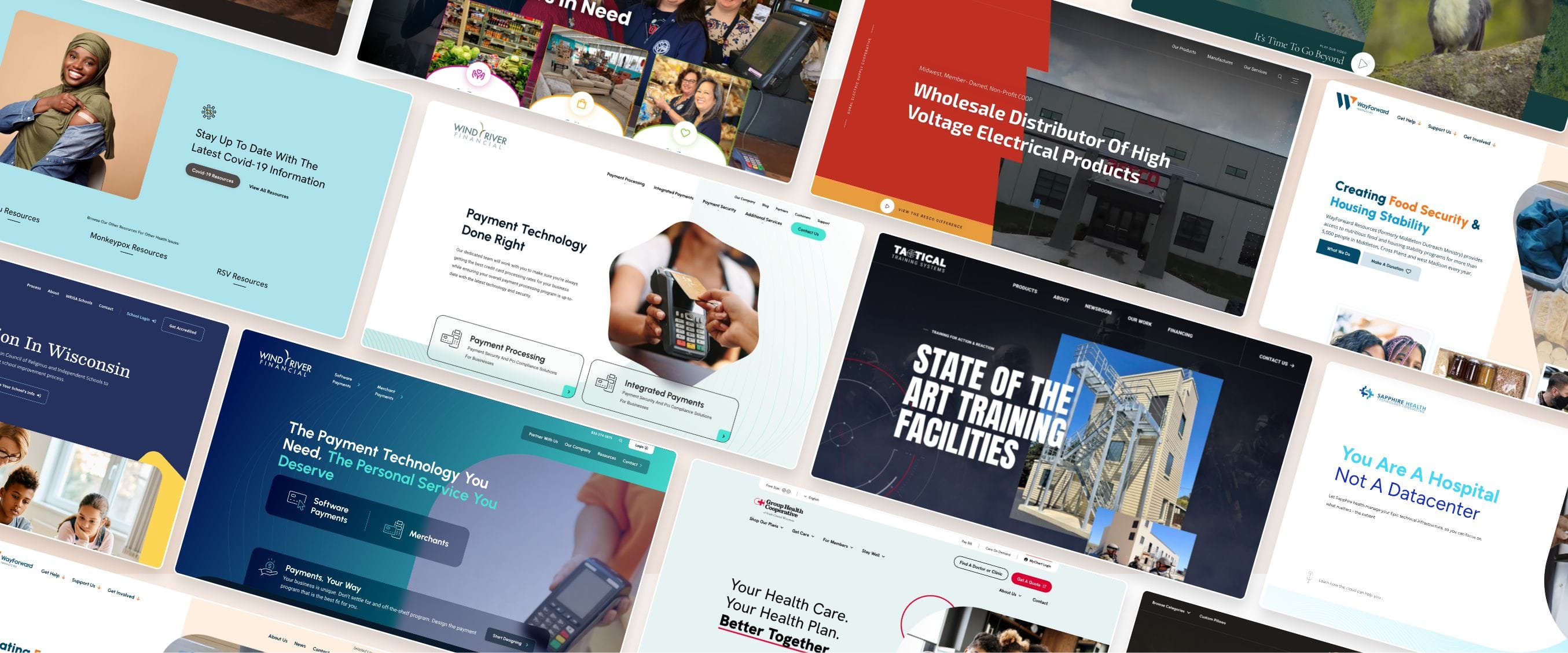Elevate Your Brand Name With Spectacular and User-Friendly Site Style
In today's digital landscape, a well-crafted web site serves as the foundation of a successful brand name strategy. By integrating visual charm with user-friendly navigation, organizations can boost individual experience and foster long lasting connections. As we explore the crucial elements of effective web site design, it becomes clear that the risks are greater than ever before.
Importance of Site Layout
Internet site design is vital in today's electronic landscape, where around 75% of individuals judge a firm's reputation based on its web site appearances. A properly designed internet site not just catches interest yet likewise cultivates count on and encourages customer involvement. In an age where on-line communications are vital, companies can not manage to overlook the impact of style on user assumption and habits.
Effective internet site style works as the structure for a brand name's on the internet existence, influencing user experience and retention rates. An aesthetically appealing and useful website can differentiate a brand from its rivals, improving its market placement. An attentively created web site can improve navigating and improve the ease of access of details, which is crucial for keeping site visitors and reducing bounce prices.
Additionally, the importance of internet site style expands past aesthetic appeals; it incorporates the combination of responsive style principles that accommodate different tools. As mobile usage remains to increase, making sure that a website functions flawlessly across all platforms is essential for reaching a broader target market. To conclude, prioritizing site design is not simply a matter of visual allure; it is a critical imperative that straight influences a company's success in the electronic world.
Crucial Element of User-Friendly Design

Responsive designs ensure that the web site operates seamlessly throughout various tools, from desktop computers to smartphones. This versatility is important in today's electronic landscape, where individuals gain access to internet sites via multiple platforms.
In addition, clear telephone calls to activity guide users toward preferred end results, whether that be buying, authorizing up for a newsletter, or speaking to the service. These triggers need to be plainly displayed and conveniently identifiable, utilizing contrasting shades and engaging language.
Furthermore, accessibility functions, such as alt text for photos and keyboard navigating choices, are crucial in making the site usable for people with disabilities. By integrating these crucial elements, companies can produce an user-friendly site that not just improves site visitor fulfillment but also encourages interaction and conversions.
Aesthetic Charm and Branding
Aesthetic appeal plays a crucial duty in establishing a brand's identity and fostering a connection with users. A well-designed internet site shows the core values and personality of a brand name, creating a prompt impression that can influence user understanding and engagement. Aesthetic components such as shade schemes, typography, and imagery collaborate to connect the essence of a brand, making it unforgettable and recognizable.
Regular visual choices throughout all systems reinforce brand name identity and add to a cohesive experience for users. As an example, a deluxe brand might choose for a minimal style with low-key shades and sophisticated font styles, while a vibrant startup could welcome strong shades and spirited graphics. These choices not just communicate the brand's message however likewise stimulate details feelings and organizations that reverberate with target market.
Additionally, visual appeal can differentiate a brand in a saturated market. An aesthetically striking website can stand out and invite expedition, setting a brand besides competitors. Ultimately, the combination of aesthetic allure within web site design is essential for constructing brand name commitment and trust, as it acts as a foundation for a strong, lasting partnership in between the brand name and its target market.

Enhancing User Experience
A well-crafted design not just records interest yet additionally significantly boosts user experience, ensuring site visitors can browse a website with simplicity and contentment. Trick components such as intuitive navigating, responsive formats, and clear contact us to action are crucial in leading customers with the internet site effortlessly. When customers can locate info swiftly and easily, their general satisfaction boosts, promoting a favorable relationship with the brand.
In addition, integrating aesthetic power structure helps to guide users' emphasis to the most vital content, making it simpler for them to understand the site's offerings. Regular use of colors, fonts, and imagery enhances brand identity while creating a cohesive experience that resonates with site visitors.
Additionally, optimizing load times is critical; slow websites can cause stress and higher bounce prices. Focusing on mobile-friendliness makes sure that users accessing the website from various gadgets have an uniform experience, even more Website Design boosting usability.
Measuring Success and Impact
Success in website layout can typically be evaluated through various metrics that disclose the impact of individual experience on site read this article visitor behavior. Secret efficiency indicators (KPIs) such as bounce rate, typical session duration, and conversion rate provide important insights into just how efficiently an internet site involves its customers. Website Design. A high bounce rate may indicate that site visitors are not locating what they anticipate, indicating the demand for layout improvements or content refinement
In addition, tracking customer interactions via devices like heatmaps and session recordings can show just how visitors browse the site, highlighting locations that need optimization. If individuals regularly ignore a call-to-action switch, it might require rearranging or revamping for much better presence.
Moreover, gathering individual comments via surveys or usability screening can aid identify discomfort points in the individual journey. This qualitative data complements quantitative metrics, offering an alternative view of website efficiency.
Inevitably, measuring success and effect in web site style includes a mix of logical devices and user insights. By continually assessing these metrics, organizations can make enlightened choices that improve individual experience and foster brand loyalty.
Conclusion
In final thought, efficient internet site style serves as a crucial great post to read part for brand altitude in an affordable digital landscape. Ultimately, a well-executed site layout not only identifies a brand but likewise considerably affects its on-line presence and success.